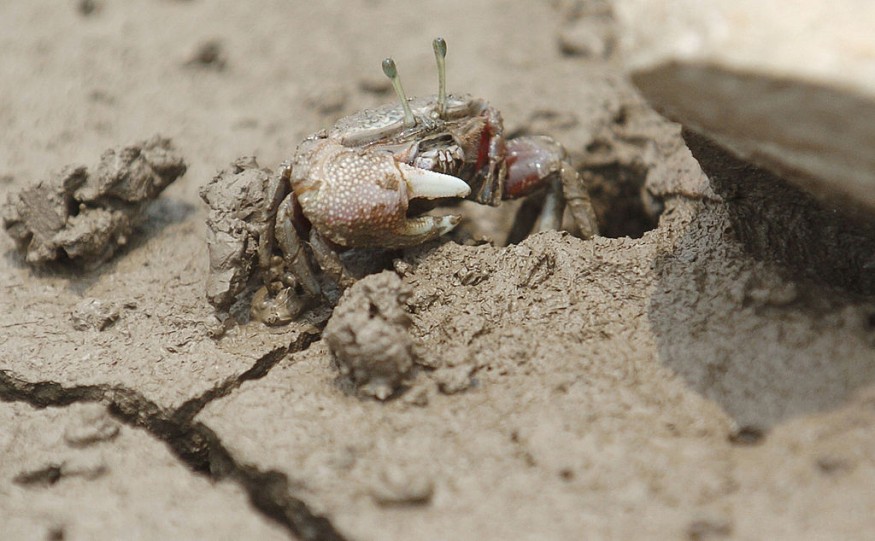
A fossil of a bizarre creature looking "like a toilet brush" with eyes and spike-studded arms was discovered 1990 in the Chengjiang Lagerstätte, a site in China's Yunnan province.
Apparently, 500 million years ago, the juvenile scampered along the seafloor near what is now southwestern China and now the specimen hints at early diversity in a group of Cambrian marine arthropods called radiodonts, according to LiveScience.
The ancient 'innovation crab' (Innovatiocaris maotianshanensis) had bobbing eyes; a pair of spike-lined armlike appendages; and a tail fan with long, sweeping blades, which lived during the Cambrian period (541 million to 485.4 million years ago).
The specimen which was nearly complete when found measured nearly 6 inches long and about 2 inches wide, and was previously known radiodont species, researchers reported in the Journal of the Geological Society.
Reevaluation of the Species
After recent reevaluation of the fossils, lead study author Han Zeng, an assistant professor at the Nanjing Institute of Geology and Paleontology at the Chinese Academy of Sciences said that the fossil had different raptorial appendages than all other radiodonts which they are "mainly distinguished".
In fact, Zeng said that the fossil was not only a new species but a previously unknown genus.
According to the study, the species was one of the ocean's most fearsome predators during its days, and are among the oldest giant apex predators on Earth.
"Their appearance in the 520 million-years-ago early Cambrian indicated the formation of complex food webs and marine ecosystems," he explained. Aside from their ecological importance, the species Radiodonta also "have a very bizarre morphology that has puzzled scientists for over a century since their first fossil discoveries in [the] 1880s."
For decades, their isolated body parts were identified by paleontologists as belonging to a wide range of animal groups. It wasn't until the 1980s when the first complete radiodont fossils were found that researchers reconfirmed the classification of the group as ancestral lineage of arthropods.
Intriguing New Clues About the Arthropod Ancestors
The new fossil radiodont discovery are very rare, they serve important roles in understanding radiodont palaeobiology . It also led to new questions about the group's ecology and evolution over their 120-million-year history, such as how many species there were, how they hunted for food and fed on their ocean prey, and how they evolved, according to Zeng.
Based on their spinous raptorial appendages, I. maotianshanensis relatively predate on large preys. Their large eyes which suggest good vision, gills used for breathing and swimming, and tails to help them turn and maneuver indicates they are built to be an active predator.
The newfound genus, "Innovatiocaris" suggests the presence of a new evolutionary lineage among Radiodonta. The study acknowledges the fact there still much to be unearthed about the group's diversity and evolutionary history, as what Zend Zeng told Live Science. "Upcoming new fossils of Radiodonta will certainly tell us more," he said.
Overall, the study provides new insights and illuminates the early diversification of Radiodonta.
Related article : Divine 'Miracle' and Vegetarian Crocodile in Indian Temple Dies at 75
© 2025 NatureWorldNews.com All rights reserved. Do not reproduce without permission.





